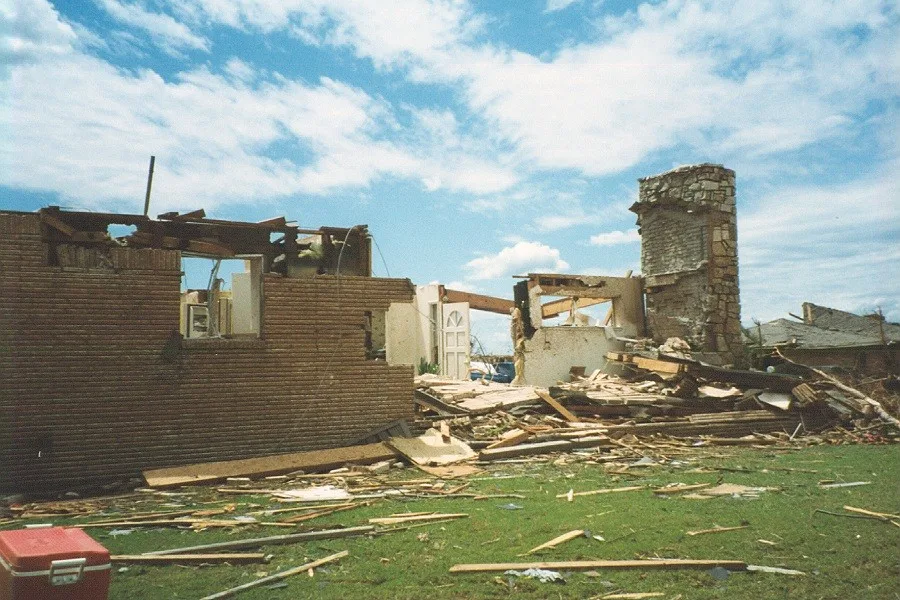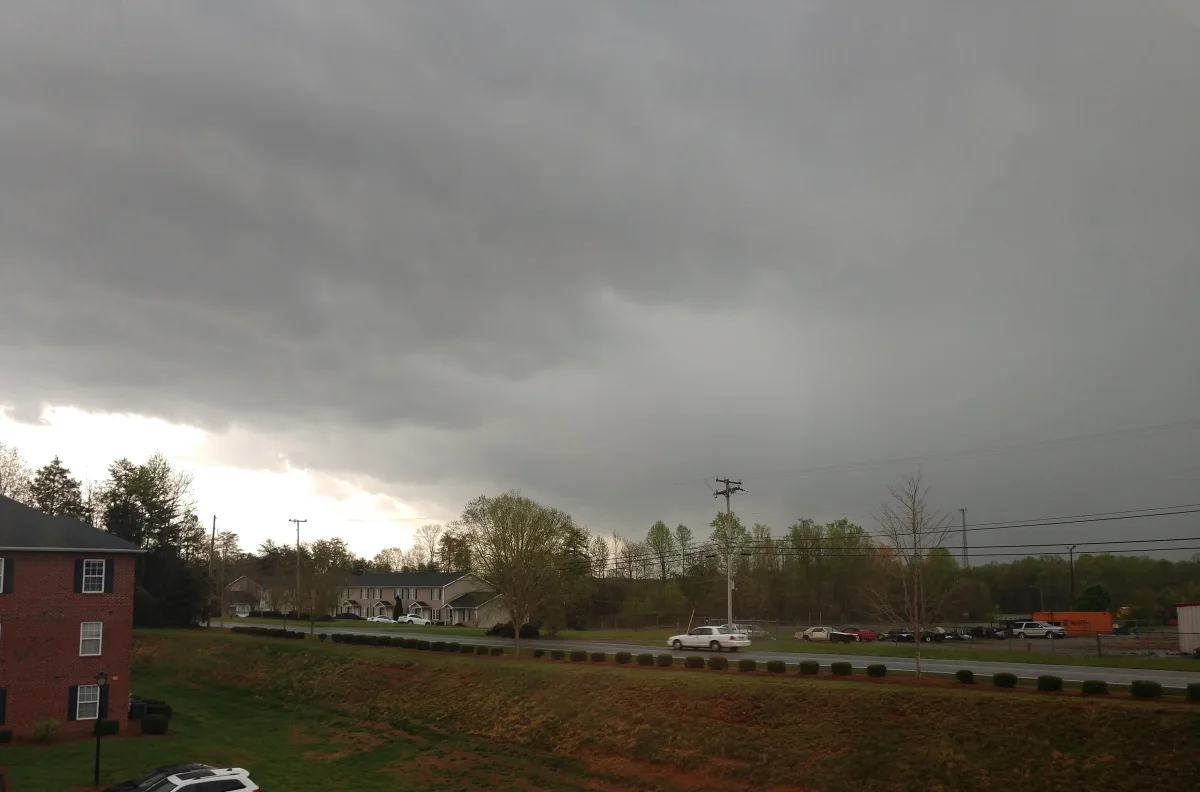
Don’t fall victim to these seven dangerous tornado myths
Tornado safety is more important than ever as we head into the summer months. Here are some tornado myths to avoid—and the tips you need to stay safe.
Are you safe from a tornado if you live in a city? Do lakes ‘repel’ tornadoes? Will opening your windows protect your home from destructive winds? Plenty of myths and questions swirl around tornadoes every season. Here are seven tornado myths you should never believe—and a few things you can do to stay safe.
Tornadoes can and do hit cities
One of the most pervasive—and terrifying—tornado myths that we can’t quite seem to shake is the idea that tornadoes can’t hit cities.
This myth is fuelled by the false belief that tall, tightly grouped buildings tend to disrupt rotating thunderstorms and prevent tornadoes from hitting downtown cores. This isn’t true. While there can be intervening conditions like local lake breezes and terrain, tornadoes tend to miss city centres mostly by chance.
We’ve seen dozens of cases where tornadoes hit major cities, including Vancouver, Ottawa, Atlanta, New York, and even Washington, D.C.
MUST READ: Everyone needs a home emergency kit. Here’s how to stock yours
WATCH: A basketball game may have saved thousands of lives during the Atlanta tornado
Tornadoes easily cross bodies of water
Lakes, rivers, and streams don’t act as a deterrent to tornado activity. In fact, many of southern Ontario’s tornado threats materialize when severe thunderstorms roll off Lake Huron. Tornadoes routinely cross bodies of water along their paths.
Part of this myth may stem from the existence of waterspouts, or rapidly rotating columns of air that look similar to tornadoes. Waterspouts form in relatively calm conditions and their winds tend to fall on the weaker side. However, tornadic waterspouts—tornadoes that touch down over water—can easily move on land and continue producing damage well inland.
No one and nowhere is ‘immune’ to tornadoes
No communities are immune from a tornado. There are plenty of places where tornadoes are rare, such as the territories up north and portions of the Atlantic provinces, but tornadoes can occur just about anywhere when conditions are favourable.
MUST SEE: Nova Scotia breaks 21-year tornado drought with strongest twister in 41 years
If there’s ever a risk for severe weather and tornadoes in your area, never take false solace in the idea that your community is protected from tornadoes. It’s best to prepare for the worst and hope for the best than get caught by surprise.
Never open your windows before a bad storm
Many of our lingering tornado myths are a vestige of the old days when we didn’t know much about these nightmarish storms. Meteorologists have made tremendous advances in understanding tornadoes and developing fantastic detection and safety methods over the past few decades.

A home destroyed by the F5 tornado that hit Moore, Oklahoma, on May 3, 1999. (NOAA/NWS)
One of those long-gone holdovers is the idea that we should open our windows before a tornado. The idea, it used to go, is that opening the windows equalizes the pressure between the indoors and the outdoors, giving your home a better chance of surviving a tornado.
Not only is this deeply wrong, but it’s counterproductively dangerous.
It’s not the air pressure that rips apart a home—it’s the wind. Wind pushes on the walls and lifts at the roof and debris pelts and weakens the structure all the while. Opening the windows makes it easier for wind and debris to tear the house apart from the inside out.
Don’t seek shelter under a bridge
Some of the most famous tornado videos were shot by folks who left their cars to take shelter under a bridge or overpass. They were the lucky ones.
Many people have died as a result of seeking refuge under a bridge as a tornado bore down.
Bridges provide little to no protection from powerful winds and flying debris, even structures that have seemingly protected alcoves under the deck. In fact, the wind picks up speed as it squeezes beneath the bridge, enhancing the risk of injury or death.
Tornadoes aren’t always visible
It’s a normal impulse to look outside when a tornado warning is issued to see if you can see any danger for yourself. It’s best to trust the warning and take shelter without risking your safety to look outside. Not all tornadoes are visible before they hit.
Across humid areas like Ontario and Quebec, heavy rain and hail can obscure a tornado and make them impossible to spot until it’s too late.

A rain-wrapped EF2 tornado causing significant damage near Reidsville, North Carolina, on April 15, 2018. (Dennis Mersereau)
Severe thunderstorms on the Prairies can encounter drier air that prevents the condensation funnel—the cloud that makes the tornado visible—from forming, making these tornadoes practically invisible outside of the dirt and debris swirling on the ground.
And then there are nighttime tornadoes, which are virtually impossible to spot even under the most favourable circumstances.
Never wait until you can see a tornado for yourself. Tornado warnings are issued for good reason. Trust the warning and take immediate action to protect you and your loved ones from danger.
Tornadoes are possible year-round
The idea of ‘tornado season’ is a bit of a misnomer. While the summer months typically see a peak in tornado activity across the country, Canadians have to stand guard against tornadoes anytime from the early spring to the middle of fall.
It’s an even scarier situation south of the border, when tornadoes are possible any day of the year in the United States. Wintertime tornadoes are especially common across the southern states, including many of the popular vacation destinations where Canadians flock to escape a brutal winter’s chill.
No matter what time of year it is, it’s always best to keep an eye on the weather forecast and listen out for warnings if strong thunderstorms are on the horizon.
How to stay safe if you’re under a tornado warning
The best way to prepare for a tornado is to prepare ahead of time.
Scout out some safe spots in your home that you can quickly access if you’re placed under a tornado warning. Ideally, the best place to shelter is an underground basement, in a spot away from exterior walls, windows, or doors.
If you don’t have a basement, an interior room on the lowest level of the home is your best bet. This is commonly an interior bathroom or a closet. The goal of tornado safety is to put as many walls and barriers between you and the wind and debris as possible.
If possible, wear sturdy closed-toe shoes on days when tornadoes are possible, and keep a bicycle helmet in your safe spot for everyone in your family to protect your heads from flying debris.
Frequently monitor weather forecasts and stay aware of when severe thunderstorms are possible in your area. Make sure you have multiple ways to receive severe weather warnings the moment they’re issued by installing the Weather Network app and activating your device’s built-in emergency alerts feature, which automatically pushes you tornado warnings based on your location.
WATCH: What to do if a tornado warning is issued while driving
Thumbnail courtesy of the U.S. Navy/Flickr.











